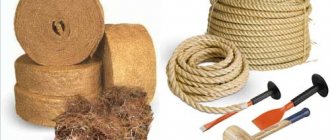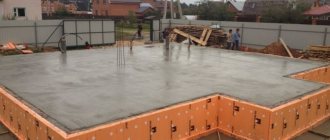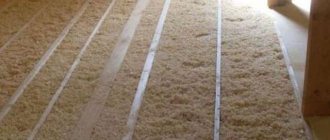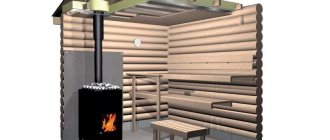The main function of the Russian bath is to strengthen human health. To achieve this goal and in no way harm your body while visiting the bathhouse, you must properly insulate the bathhouse. If all the rules for insulating this type of room are followed, the heat in the bathhouse is retained for a long time, which significantly saves money spent on its heating.
The process of insulating walls in a bathhouse
In most cases, insulation must be done indoors. This allows you to quickly heat the bath and also quickly cool it if necessary. The bathhouse has the following properties:
- Relatively low air temperature 50-60 degrees;
- High humidity. Sometimes it can reach 100%.
Step-by-step internal insulation of a bathhouse
Is it necessary to insulate a bathhouse and steam room?
Brick baths always need insulation due to the high heat capacity of the structural material from which the walls are made. Simply put, walls take a long time to heat up, so a thermal insulation layer is necessary. Thanks to it, the temperature in the room rises at lightning speed and then very slowly drops. And in general, much less resources are spent on heating.
The heat capacity of wood is lower than that of stone. So you can do without insulation if the wooden wall is thicker than 150 mm. But then the bathhouse will take longer to heat up, retain heat worse, and spend more resources on maintenance and heating.
Therefore, the insulation of a bathhouse and steam room depends not only on the material of the walls, but also on the desire to make these rooms as durable and energy efficient as possible. In addition, thermal insulation can be completed without the help of professional workers in just a few hours. And it will subsequently save time and money for decades.
However, there are other important benefits. For example, due to the fact that LOGICPIR insulation does not allow moisture to enter the walls, it helps to maintain not only warmth in the room, but also an environmentally healthy environment. This material prevents the appearance of mold and mildew, which means it reduces the likelihood of developing asthma, allergies and other lung diseases. After all, their main enemy is high humidity.
Materials
High-quality thermal insulation of walls requires non-toxic, non-flammable insulation materials that can withstand heat and moisture for a long time.
These include:
- foil;
- basalt wool;
- mineral wool;
- penoplex;
- polyurethane foam;
- Styrofoam.
Selection of material
The steam room needs a responsible approach to thermal insulation using good quality insulation.
Basalt mineral wool
Main advantages:
- resistance to temperature fluctuations;
- good thermal insulation;
- fire resistance;
- mechanical strength;
- low specific gravity;
- ease of installation on structures, regardless of configuration;
- preventing the formation of cold bridges at junction points;
- long service life.
Basalt wool
There are disadvantages that cannot be kept silent about - fear of water, tendency to damage by rodents. Wet material loses its thermal insulation properties, and when it comes into contact with wood, rotting begins.
Basalt wool cannot be used for steam room walls.
Foil insulation
Insulation of walls is a difficult stage in the construction of a bathhouse. Often foil insulation is used for this. The thinnest aluminum coating reflects light and heat, helping to effectively retain heat in saunas and baths.
Foil is a reliable barrier against moisture from the outside. Fire-resistant, enhances sound insulation, without increasing the thickness of the partitions.
Foil
Craftsmen consider light weight, efficiency, hygiene, and environmental friendliness to be an advantage. The big drawback is the tendency to corrosion, so the foil is coated with protective mixtures.
Penoplex
Penoplex is extruded polystyrene foam. A budget option. The material has been used in construction for a long time. Its production is considered progressive.
Penoplex is represented by rectangular slabs, they are easy to install and cut. This is a comfortable layer of wall insulation for any surface.
Advantages:
- good vapor barrier;
- low thermal conductivity;
- compressive strength – high resistance to loads;
- operation 40 years;
- middle price segment.
Penoplex
Disadvantages of insulation - flammability, toxicity, inability to restore shape after damage. Insects and rodents often damage penoplex. The price is higher compared to glass wool and polystyrene foam.
Styrofoam
Polystyrene foam or expanded polystyrene is used to insulate the walls of a bathhouse from the outside. Its advantages:
- resistance to mold, bacteria;
- moisture resistance;
- fire resistance;
- low specific gravity;
- price;
- ease of processing and installation.
Foam plastic
Negative aspects of the material:
- prone to damage by mice;
- release of poisons under the influence of fire.
Polyurethane foam
Polyurethane foam is a mixture of polyester with water, emulsifiers, and diisocyanate. It is applied by spray. The insulation is moisture resistant, retains heat, absorbs noise, and is chemically passive. The price of polyurethane foam is high, and special equipment is required for thermal insulation.
Polyurethane foam
Independent work leads to installation errors that interfere with the insulation of the walls. It is better to entrust construction work to specialists.











